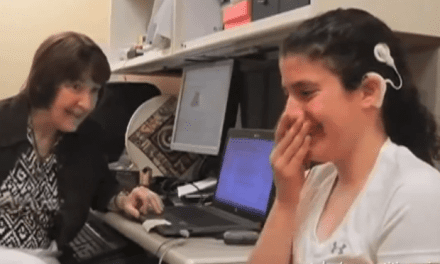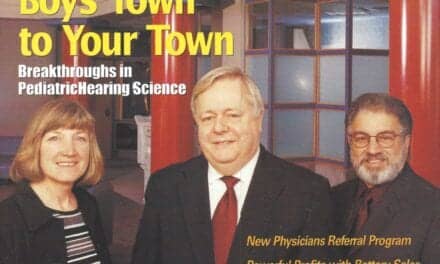
|
It was a big defining step for William Austin to make back in 1971 when he bought a three-person earmold casting outfit called Starkey and merged it with the St Louis Park, Minn-based Professional Hearing Aid Service he’d founded 4 years earlier.
Thirty-eight years later and now with more than 3,500 employees working in some 22 facilities and conducting business in more than 100 markets around the globe, Starkey Laboratories Inc, Eden Prairie, Minn, has certainly taken many more major steps in getting to and refining its current position as one of the world’s leading manufacturers of hearing technology.
And now, as explored at its 2008 Winter Scientific Conference in December, Starkey is taking its next steps—leaps really—to further redefine itself in the hearing health care industry by its dedication to evidence-based design as the fundamental element driving its research and development efforts.
|
Go Online: |
“Starkey has made a commitment to creating products based on evidence-based design,” said Brent Edwards, vice president of research for Starkey, whose presentation on applied translational research in hearing aids opened the event December 5 in Newport Beach, Calif. “This conference gave us the opportunity to talk about some of the exciting research we are working on at our facilities in Berkeley, Calif, and Eden Prairie, to help make hearing aids better for patients.”
Moderated by Dennis Van Vliet, AuD, Starkey West’s regional sales director, the 2-day conference’s panel of topics and speakers included:
- Form and Function: Design of a New Product from the Ground Up, by Deborah Corti, MA, strategic product manager for Starkey;
- Translational Research, by Catherine Palmer, PhD, director of audiology and hearing aids at the University of Pittsburgh Medical Center;
- Hearing Aids in the Real World, by Shilpi Banerjee, PhD, Starkey research audiologist;
- We Got Algorithm, We Got Music, Who Could Ask for Anything More, by Kelly Fitz, PhD, digital signal processing engineer at the Starkey Hearing Resource Center;
- Targets and Signals and Systems, Oh My! The Hidden Dangers in Verification, by Laurel Olson, MA, CCC-A, Starkey’s director of audiological research;
- Issues and Solutions in Directionality, by Jerry Yanz, PhD, senior trainer with Starkey;
- Finishing the Job: Patient Training to Optimize Performance and Reduce Returns, by Robert Sweetow, PhD, director of audiology at UC San Francisco;
- The Application of Art & Science in Starkey Products, by Jason Galster, PhD, CCC-A, manager of claims validation at Starkey.
Representative of Starkey’s long-view approach is its present foray into what may be the company’s most challenging and uncharted territory as detailed by Kelly Fitz, who elaborated on what his company is doing to improve the experience of music for hearing aid wearers.
“It has probably not escaped your attention that this is not a highly trafficked area in hearing aid research,” Fitz said to the approximately 100 attendees. “There’s not a lot of research in terms of what hearing aids do to music and hearing impairment, and there are a couple of good reasons for that. For one thing, there’s not a lot of tools for us to work with, and to make things more complicated, there are lots of variations—in musical styles, musical preferences, and the environments within which people listen to music.”
Using a series of musical segments presented normally and then through a hearing aid simulation, the difference was dramatic, but the reason was matter of fact.
“It shouldn’t come as any great surprise that hearing aids don’t do a great job on music,” Fitz said, “because after all that’s not what they’ve been optimized for. They’re heavily optimized to make speech more intelligible. But music is a whole different animal.”
Fitz said Starkey’s ultimate goals through its continuing evidence-based research on this topic is to enable a deeper understanding of the impact of hearing impairment on the way that people perceive music, then to develop sophisticated processing that’s targeted specifically at those kinds of signals that people are listening to when they listen to music, and additionally to bring in new listener-driven fitting methods that are sensitive to all the differences and varieties of preferences and environments.





